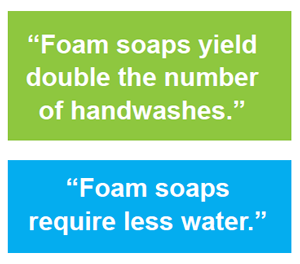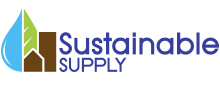Home > COVID-19 Essentials
COVID-19 Essentials
Take advantage of our wide selection of COVID-19 Essential Products for home and business.
How Should I Wash My Hands?
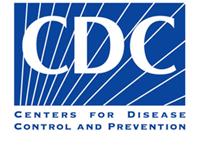
The Centers for Disease Control and Prevention (CDC) state, “Handwashing is like a ‘do it yourself’ vaccine.”
Often labeled as the most important step you can take to prevent sickness in yourself and avoid spreading germs to others, there’s still so much confusion surrounding the process, like what’s the right way to wash your hands? What’s the best product to use? Hot or cold water? When should I wash?
The answers to these questions are important for us all, for different reasons - the right way to wash is important for health, but the right product to use can also impact your facility’s budget in a substantial way. So let’s demystify this process and make handwashing work like the vaccine it’s meant to be
What’s the right way to wash your hands? The CDC offers this simple process:
1. Wet your hands with clean, running water (warm or cold), turn off the tap, and apply soap.
2. Lather your hands by rubbing them together with the soap. Be sure to lather the backs of your hands, between your fingers, and under your nails.
3. Scrub your hands for at least 20 seconds. Need a timer? Hum the "Happy Birthday" song from beginning to end twice.
4. Rinse your hands well under clean, running water.
5. Dry your hands using a clean towel or air dry them.
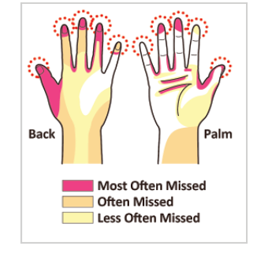

It’s that simple: WET, LATHER, SCRUB, RINSE, DRY. Perhaps the most important info to note from a process standpoint that people tend to take shortcuts on is the lathering of the backs of hands, in between fingers, and under nails. Additionally, the 20 second duration is a crucial component.
Take note that cold or warm water can be used. In fact, numerous studies have revealed that hot water temps have no impact on pathogen removal whatsoever. On the contrary, microbiological swabbing of hands revealed an increase in E.coli and Listeria counts on hands that were washed in basins when very hot water was used, when compared to cold water. And then there’s all that water that’s wasted while waiting for it to heat up - money down the drain!
What Soap Should I Use to Wash My Hands?
Easy. You should use antibacterial soap, right? You might be surprised. A 2007 study found that when compared to plain soap, antibacterial soap wasn’t more effective at preventing infectious illness symptoms or reducing bacterial levels on hands. And in April 2010, the Food and Drug Administration said it lacked evidence that triclosan, the most common ingredient found in antibacterial soaps, has any benefit over washing with regular soap and water. Newer studies have found that triclosan causes great harm to the environment and may have negative consequences for humans too. So what should you use? Soap - anti-bacterial or plain will work with the right technique.
The real debate is whether to use liquid soap or foam soap.
The Benefits of Liquid Soap:
• Effective cleaner with proper technique
• Lowest initial cost
• No special pumps required
• Works well for all types of handwashing
The Benefits of Foam Soap:
• Effective cleaner with proper technique
• Pre-lathered soap requires less water for rinsing
• Reduced maintenance costs - foam eliminates drips, stains, and clogs
• More handwashes per refill
• Works well for all types of handwashing
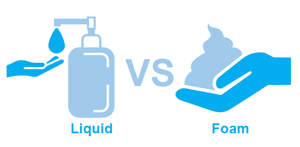
While both soaps can be effective with the proper technique, the choice between liquid and foam is a choice that has to do more with money.
It’s true that liquid soap costs less than foam, initially, and only slightly. But it’s also true that foam soaps yield double the number of handwashes. Therefore, using foam soap produces significant product savings, and if your facility has high restroom traffic, the savings are even more substantial.
The savings don’t end there. Foam soaps require less water. Another way to look at the “foam” soap is that it’s pre-lathered, meaning it doesn’t require the same amount of water to produce the necessary lather. Additionally, foam requires less water to rinse and is not prone to leaving a residue on your hands like its liquid counterpart.
So you might be asking whether the water savings are worth it.
Here are the facts about water today:
• The price of water has risen 41% since 2010.
• Water prices rose faster than any other household staple last year.
• Water continues to rise significantly faster than inflation
• The commercial restroom consumes approximately 40% of the building’s water.
And lastly, studies have shown that when compared to liquid soap, users of foam soap saved 10% more water per handwashing. In an era where water has become a real economic concern, foam soap represents just one way to save money at your facility.
